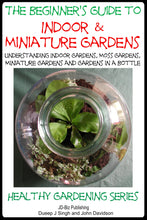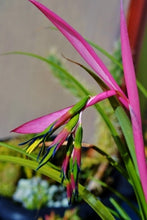

The Beginner’s Guide to Indoor and Miniature Gardens - Understanding Indoor Gardens, Moss Gardens, Miniature Gardens and Gardens in a Bottle
Introduction
The first time I saw a miniature garden growing in a bottle, my immediate response was “but how did the plants get into the bottle?” Naturally, this amused the gardener very much, and for those people who are not into the secret of how the plants got into the bottle, this feat can only be on par with how did a model ship get into the bottle!
A garden in a bottle has about the same sort of fascination and requires almost that same amount offered dexterity and ingenuity to construct as a ship in the bottle. It is also going to need a lot of patience, because after all, you are gardening in limited space. But once your water garden is established, it can be left for months without attention. In many cases, depending on your plans, it may also not need watering.
So for all those people who have been really fascinated with this conversation piece, when you see people surrounding a glass bottle with beautiful plants growing in it, here is the beginner’s guide to indoor gardening in a bottle.
More than 200 years ago, a London physician named that Nathaniel Ward discovered that mosses, as well as ferns, which never grew satisfactorily in a city full of industrial fumes flourished if they were grown in the protection of a glass sided case. Thanks to his experiments, bottle Gardens developed in Europe, and since then, they have been the rage all over the world for people who are strapped for place, are looking for a new hobby, and also want to achieve something wonderful.
You can use any large bottle. But the bottle has to be made of glass! Carboy glass bottles are normally made for brewing beer, so if you can get them cheap at a nursery nearby, please do so.
A 5 gallon carboy bottle is going for around USD 48 on eBay USA, but as my gardening books always suggest, follow and advocate minimum of expense and minimum of fuss, you may want to spend some time asking around in your circle of friends and neighbors for large glass bottles, which is they can spare you.
I have seen some of these bottles kept away in garages, because once upon a time, they were used and the owner does not have any use for them at the moment. He may not want them for another 20 years, either. Please do buy the bottles from your friends!
Otherwise, a long-lasting friendship can get into jeopardy, when carelessly spoken words of half jesting “Well, he borrowed that bottle from me and what a mess he has made in it.” could cause subconscious rancor and ill will. That is of course if he is not interested in gardening!
If he is a gardener, he is going to demand his bottle back – along with your bottle garden, - five years down the line!
You may want to tell him the purpose for this gardening experiment. It is possible he may also want to give you some suggestions about plants based on his experience.

Table of Contents
- Introduction
- Necessary Tools for Bottle Gardening
- Best Plants for Bottle Gardening.
- Small Plant Gardens
- Pot et Fleur
- Making A Moss Garden
- Knowing More about Moss.
- Growing Plants from Pips
- Exotic gardening – Pineapple Tops
- Miniature Gardens
- Trees
- Other Popular Tiny Plants
- Taking Care of Your Miniature Garden
- Bulbs for Your Garden
- Selecting the Right Bulbs
- Planting Your Bulbs.
- Planting Hyacinth and Crocus Corms
- Bulb Fiber – Tips
- Newspaper Compost
- “Plunging” Bulbs.
- Growing Bulbs on Water.
- Methods of Water Cultivation.
- Bulb Failure
- Best Bulbs Choices
- Conclusion
- Author Bio
Important:
This is for the Digital Book Download only. For the Printed Copy, click HERE











